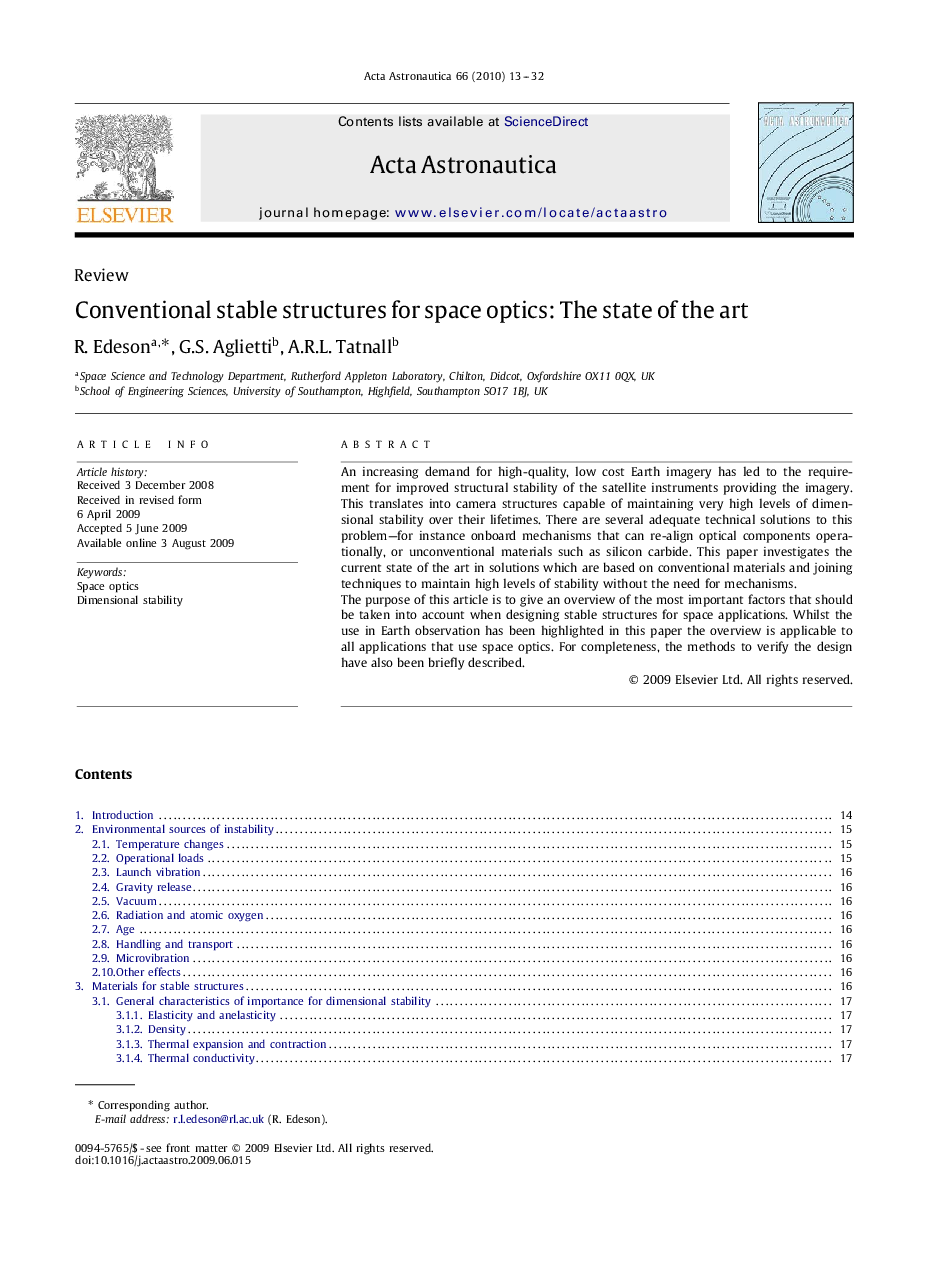| Article ID | Journal | Published Year | Pages | File Type |
|---|---|---|---|---|
| 1716534 | Acta Astronautica | 2010 | 20 Pages |
An increasing demand for high-quality, low cost Earth imagery has led to the requirement for improved structural stability of the satellite instruments providing the imagery. This translates into camera structures capable of maintaining very high levels of dimensional stability over their lifetimes. There are several adequate technical solutions to this problem—for instance onboard mechanisms that can re-align optical components operationally, or unconventional materials such as silicon carbide. This paper investigates the current state of the art in solutions which are based on conventional materials and joining techniques to maintain high levels of stability without the need for mechanisms.The purpose of this article is to give an overview of the most important factors that should be taken into account when designing stable structures for space applications. Whilst the use in Earth observation has been highlighted in this paper the overview is applicable to all applications that use space optics. For completeness, the methods to verify the design have also been briefly described.
